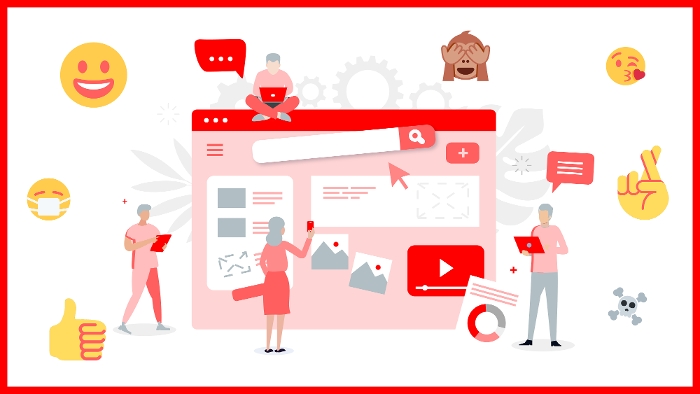

Blog: Navigating the use of visual language in corporate communications

It’s undeniable that we are consuming and composing more and more visual content in our everyday communication channels than ever before. How we communicate professionally – with each other, our clients and key stakeholders - is evolving and we’re not immune to these changes.
Nowadays, we read and understand images as much as we do words. We often speak to each other in icons (sometimes rows of them) and use text acronyms as full sentences.
ICYMI! This is the native lingo of our younger generations and those who are 🧒♥*
As more and more Millennials and Zoomers enter the workplace, the growing list of visual communication tools - emojis, memes, infographics, reels, video and digital link embeds – is becoming a normal part of business communications and casualising language conventions in the corporate world. Gen Xers and Boomers are joining in too – sending the odd emoji at the end of email correspondence to staff and clients.
This is not entirely a bad thing, provided it’s in the right context, used at the right time, for the right audience and the right brand. And if you’re not a digital native (aged 24 and under) then make sure you know what you’re saying.
To help you navigate the changing nature of communications, we’ve put together a few tips for effective use of an evolving visual language in today’s corporate world.
Know your audience – this old marketing and PR principle is more relevant today than ever. Know your customers, employees and key stakeholders’ demographics. Some older clients and customers may not know what an emoji means or how to access an embedded link – an email or letter might be better than a social post. Zoomers however will respond with a ✅.
Know your brand – a brand selling children’s toys will communicate to its customers using social channels very differently compared to a legal firm. If you’re not sure of the look, tone and messaging of what you want to communicate, perhaps review your organisation’s brand guidelines, which should include new media styles.
Context is critical - A business email responding to a complaint from a customer that you do not know well and haven’t met personally should not end like this 👍. However, an end of year message wishing a long-term client a happy and safe holiday in a text with a few 🌴🌞 is perfectly acceptable.
Be 100% sure – as with any word or phrase, if you’re not sure what you’re communicating, then don’t. For example, LOL does not mean lots of love and this 🍆 is not just the emoji for an eggplant!
* In case you missed it (ICYMI) and young at heart (🧒♥)
Hughes has a team of experts who can offer advice on corporate communications. Speak to us today on 08 8412 4100 or email central@hughespr.com.au to see how we can assist.
Hughes | Consultant
Recent News
- Which charity would your favourite furry friend support? Dig deep for Guide Dogs.
- Adelaide business leaders turning a ‘spotlight’ on homelessness
- Yugo announced Best Student Housing Provider
- Riverland Wine welcomes Chinese removal of Chinese tariffs
- Volunteering is a badge of honour for SA students
- Believe Housing Australia launches much-needed affordable rental homes in Adelaide
- All-woman crew building affordable housing for SA women impacted by violence
- Flinders Port Holdings among Australia’s best privately-managed companies
- Riverland growers to benefit from increased Rural Financial Counselling Service funding
- Celebrating our Guide Dog graduates, retiring Guide Dogs and our newest training group
- Scotch College Adelaide to host the 102nd annual SA Schools’ Head of the River Regatta
- Groundbreaking start for award-winning Waterford Purpose Built Student Accommodation Project
- CH4 Global named one of America’s Top GreenTech Companies by TIME Magazine
- DETMOLD MEDICAL LAUNCHES NEW MASK RANGE
- Blog: Crafting credibility
- Riverland grape growers call for financial support measures to save local industry
- END OF AN ERA FOR BOILEAU BUSINESS TECHNOLOGY
- Hundreds flock to 24/7 National Pharmacies store in first week
- Flinders Port Holdings welcomes PV Spirit to its fleet
- Adelaide welcomes back Emirates








